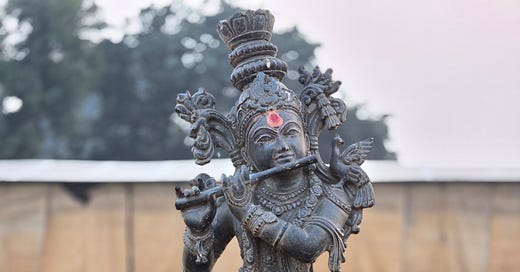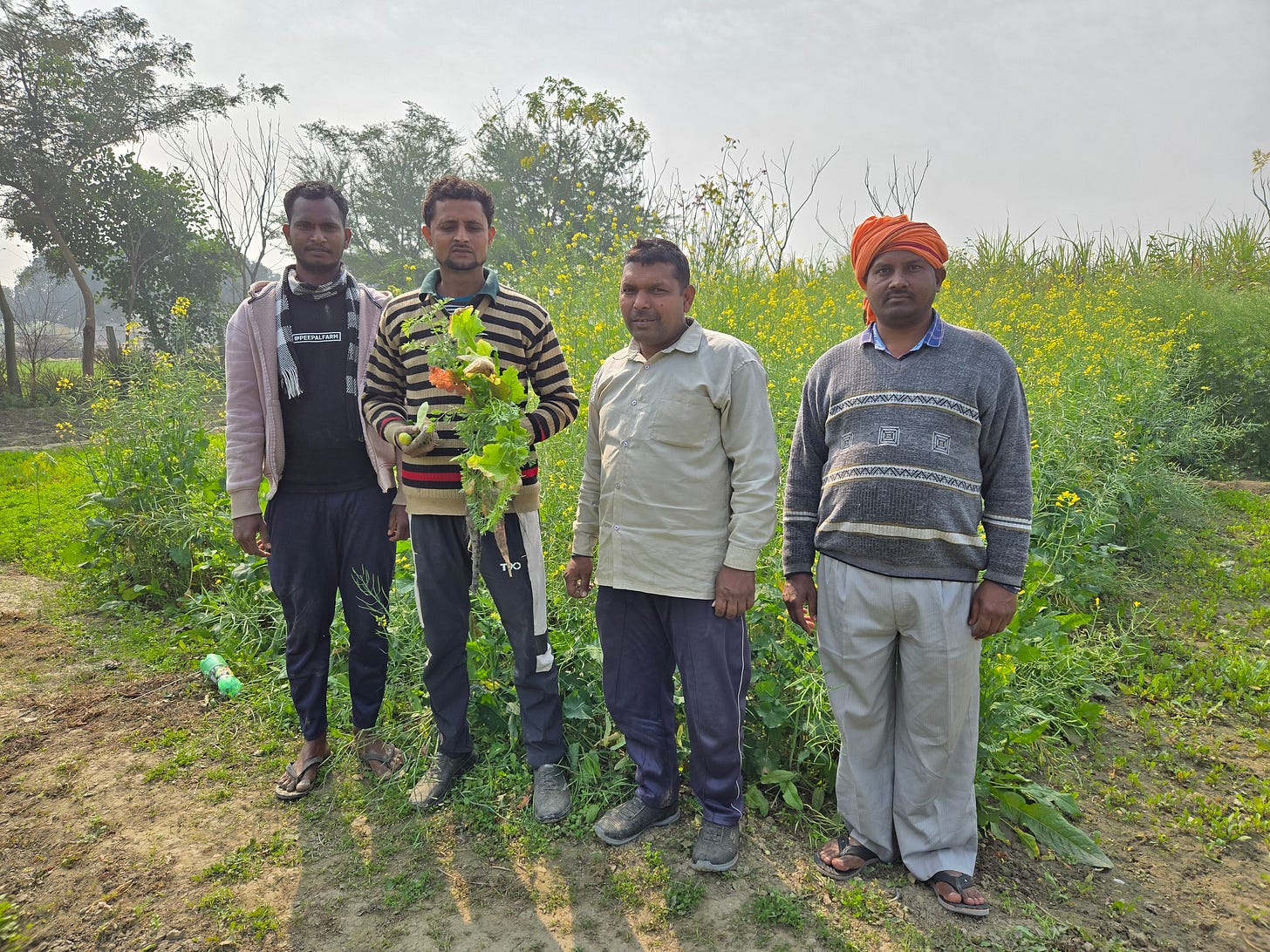A few years into my Yoga practice, a teacher posed a simple question. Fill in the blank, she said. “Yoga is __________.” I am not sure what my pithy response was at the time. However, lately, I’ve been reflecting on it as I find that Yoga has subtly changed how I interact with my surroundings. When a teacher begins the class in Sukhasana and encourages an inward focus while also guiding the correct form, I feel my mind and body start to move together. As the poses progress, even the Earth under me has a role to play in that movement. It is perhaps this coming together of the mind, body, and the surroundings that Yoga has helped me recognize. So, when in January of this year I found myself at a farm outside New Delhi, India, I was able to experience a compelling metaphor for such unifying movement.
The seat of many empires past, New Delhi is the capital of independent India and a densely populated metropolis now fighting, among other things, an average AQI of 100+ points for several months of the year. Having visited monuments, tombs, palaces, gateways, markets, gardens and other things empire on past trips, I was grateful for the opportunity to spend a few days in the nearby countryside where a simple, peaceful way of life has quietly existed alongside the mighty empires for centuries. My travels took me to Bulandshahr, a city about 2 hours east of New Delhi, in the Doab region of Uttar Pradesh state. The term, “Doab” in Hindi refers to the fertile land between two rivers, the Ganga and the Yamuna, in this case. About 10 years ago, my childhood friend and lawyer-turned-farmer, Aparna Rajagopal, had established an organic farm and animal sanctuary called Beejom in Bulandshahr. I was eager to spend a few days on the farm with my parents to soak it all in.
Our accommodations were at a stunning homestead called Shreevanam located at the center of a “food forest”, a term Aparna uses to refer to the surrounding garden where she grows hundreds of native fruits and vegetables year-round. Starting with heirloom seeds, the lush “forest” is irrigated by rainwater harvested in large ponds and diverted to various sections via handmade canals throughout the property. Inspired by Japanese farmer and philosopher, Masanobu Fukuoka, Shreevanam uses no pesticides or chemical fertilizers– just A LOT of cow dung!! The Shreevanam kitchen, which is 100% vegan and runs on biogas, serves delicious farm-to-table meals to guests prepared from seasonal vegetables and grains- think beet millet dosas!
leaving weeds be, a Fukuoka farming tenet
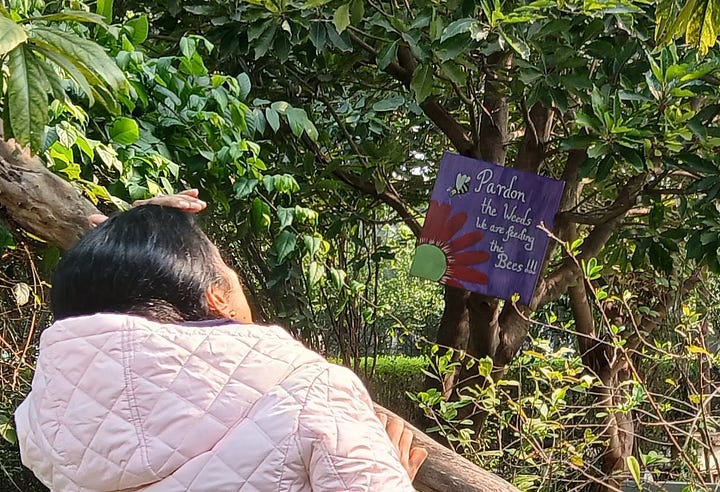
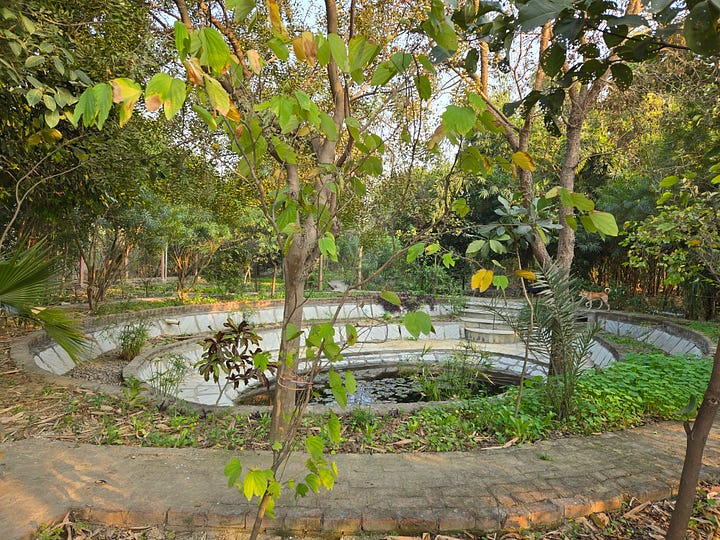
We spent a whole day among beets, radishes, carrots, cabbages, kale, broccoli, cauliflower, artichokes, lettuces, gourds, squashes, beans, gooseberries, papayas, watermelons, sapotas, figs, pomegranate, bananas, oranges, lemons, ginger, turmeric, and so much more. It was easy to forget that the land we were walking on had until recently been a victim of overfarming and monocropping.





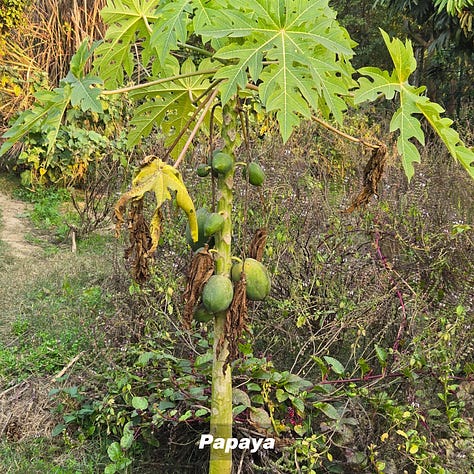


The local farm hands showed us around like proud parents talking about their children. They knew the English and colloquial names for every variety of plant, their favored growing conditions, harvest months, and so on. There was excitement in their voice as they described how they built the elaborate irrigation ditches, prepared the beds for planting, and how they cracked the code of growing certain species like the paan or Betel, an ancient digestive, said to have been enjoyed by the likes of Marco Polo. They had even built a small dung-powered biogas unit underground to fuel their own homes and kitchens. Without the bias of formal agricultural training, but through hard work and persistence, these guys had discovered the natural order of the land. They had become inseparable from their natural surroundings, an outcome altogether not too different from that of Yoga.
Ably assisting the farm hands in securing the garden were about 50 dogs, including a few purebreds, abandoned in New Delhi but later rescued by Aparna and brought to Shreevanam to live out their full potential. Just like every other member of the farm staff, the pups roamed the grounds freely keeping the pesky monkeys (yes, there are those too!!) out of the vegetable beds and keeping an eye on visitors. We were warned not to fraternize with a certain handsome Husky, considered the Bollywood Hero of the pack. Lucky for us, he took a liking for my mother, and we got to see him several times during our stay.
As if the organic farm wasn’t a powerful enough example of interconnectedness between man and Nature, Beejom, the animal sanctuary was an even more telling example of the difference a dedicated human spirit can make in the lives of scores of animals particularly livestock. I visited with several cows and bulls that called Beejom home. Indigenous to India, some of these breeds are facing extinction. The sanctuary’s objective is to preserve the species without exploiting them for milk, agriculture or transportation. Beejom is also home to gorgeous racehorses that had been abandoned after their prime. Just like Shreevanam’s farm hands, I was impressed by the compassion and commitment of Beejom’s animal caretakers, also a largely self-taught bunch. They addressed every cow, bull, goat, and horse by name, fed and cared for them, including giving them medicines and even first aid, in a few cases, until they could be examined by a visiting veterinarian.
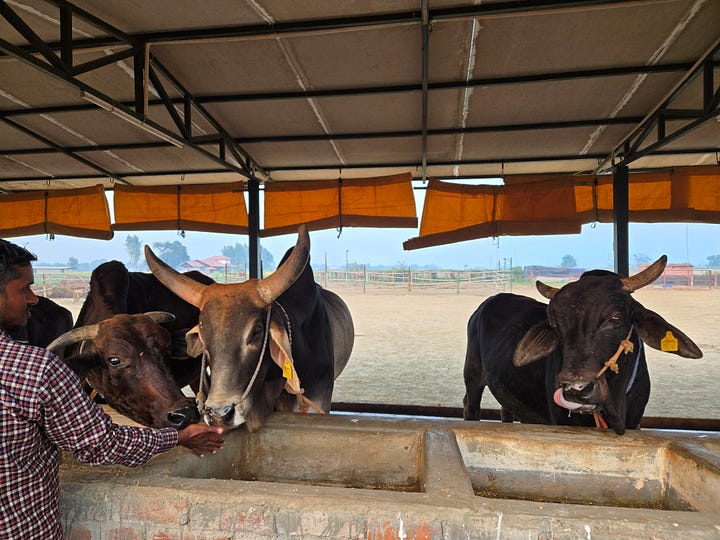
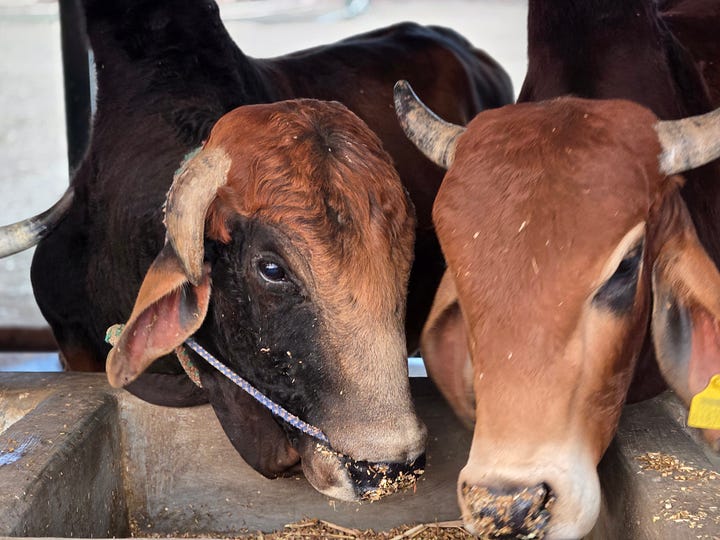
Of course, the evolution of Shreevanam and Beejom was not without challenges. The 2023 Yamuna river floods very nearly claimed the lives of the cows. Assembling staff with a beginner’s mindset to learn by doing and getting them to buy into the long-term benefits of sustainability couldn’t have been easy for Aparna. That there were so many thriving livestock in one location for no apparent reason other than to live out their time roused the unwelcome attention of nosy politicians and vigilante cow protectors. But, like Yoga practitioners can recognize, persistence and discipline are key to overcoming challenges. In a world that rewards results and efficiency, the real reward is the joy that comes from being on a lifelong journey that unifies mind, body, and Nature, a journey towards proving that sustainable living is possible. As if to serve as a spiritual guide to this incredible journey, there is a small temple dedicated to Krishna on the animal sanctuary and smaller shrines scattered on the farm. As I prayed at the temple, I realized how much of this work relied on a higher purpose without which the endeavor would be in danger of losing strength and context.

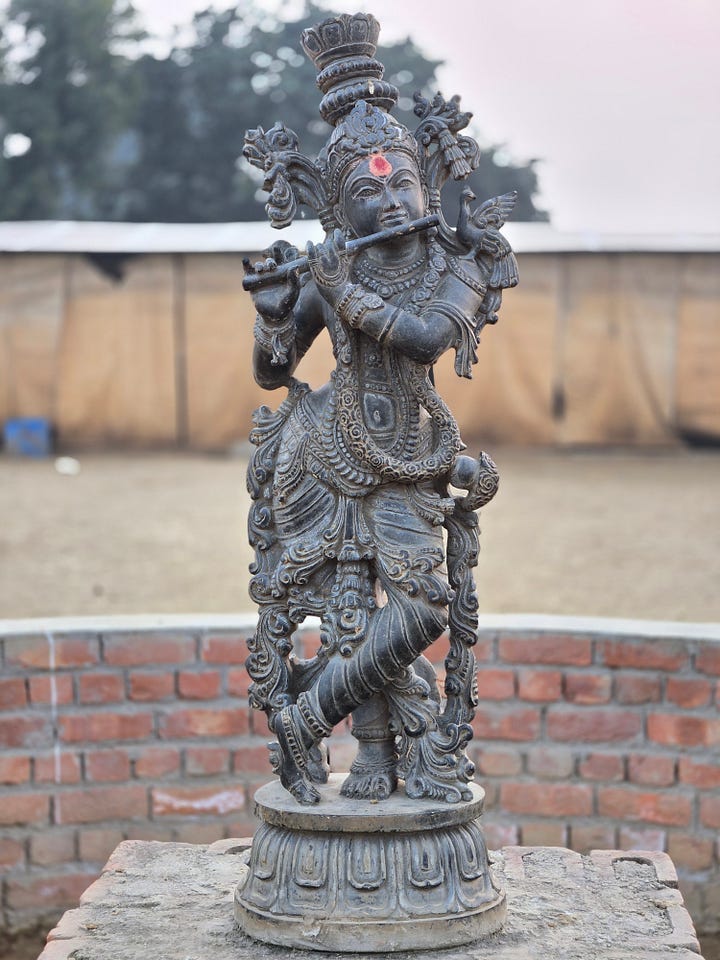
To bookend the spiritual experience, my parents and I spent our last day visiting the Ganga at Brajghat in the town of Garhmukteswar, which I am told gets a mention in the Bhagavata Purana (circa 1000 CE). An hour from Bulandshahr, Garhmukteswar, like other towns along the holy river, is filled with temples, ashrams, and markets. Thankfully, the crowds of pilgrims were 2 hours downstream participating in the once-in-144-year Maha Kumbh Mela at Prayagraj. As a result, we were able to peacefully enjoy Aarti at one of the temples along the river.
We rode a boat to a narrow mudbank in the middle of the river where people were bathing, praying and performing poojas. From the bank, my parents and I were able to wade a few feet into the river. As the holy water lapped around my toes, I was awed at how these places of worship have been in continuous use for thousands of years. Nature, like Yoga, supports our spiritual endeavors. In that moment, Yoga reminded that I am of this Earth. Yoga connected my mind and body with Nature. I was immensely grateful for my practice.
Aarthi Ram, BKS Iyengar Yoga Studio of Dallas’ member

